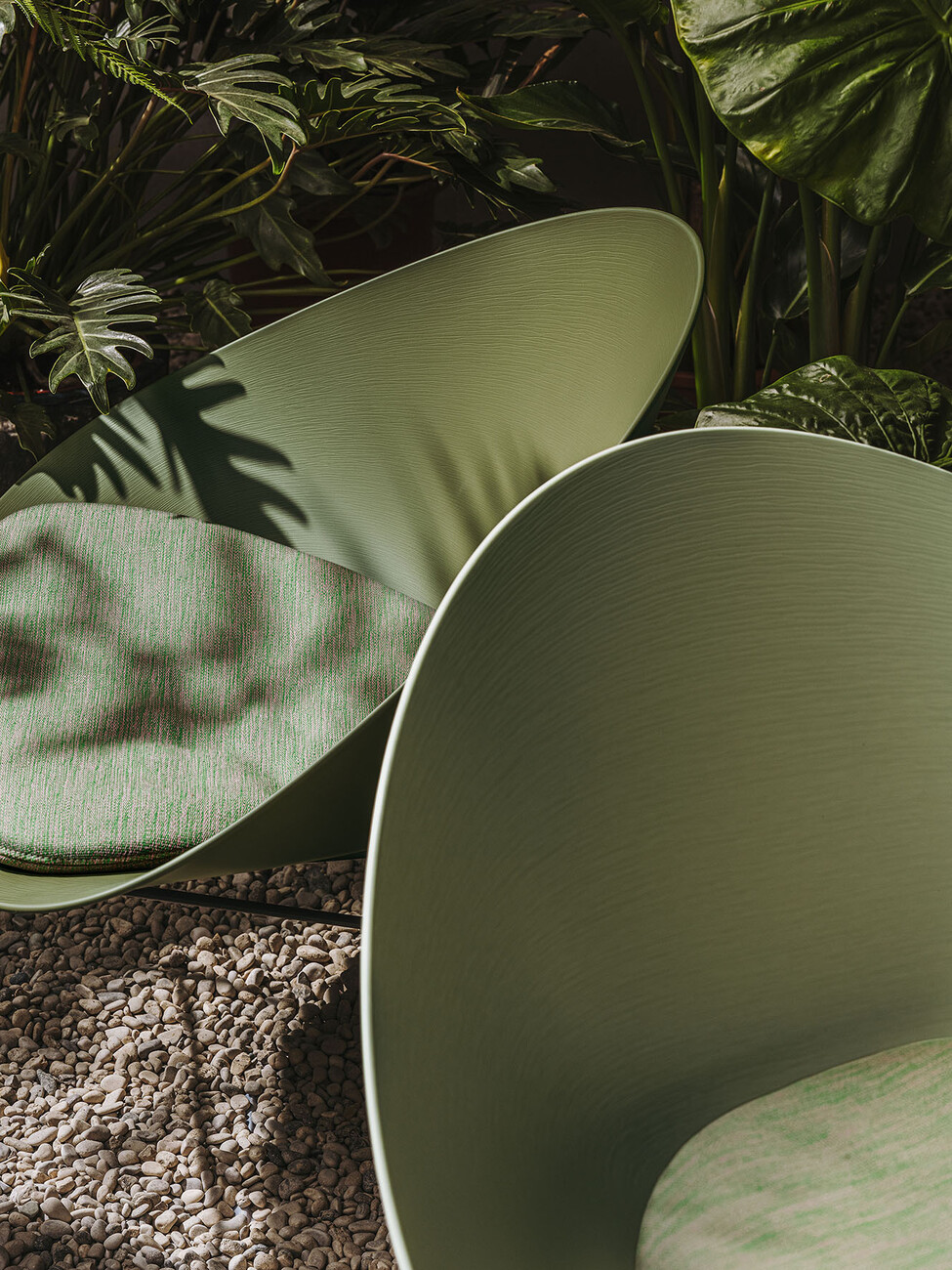Three questions to Jeannette Altherr
Anna Moldenhauer: Jeannette, what is your current direction as creative director for Arper?
Jeannette Altherr: Sustainability is definitely a very big topic. Even before the pandemic, we submitted a design for a sustainable trade fair stand. I hope that our ideas on this can be used next year. What we definitely want to expand on is to address sustainability much more comprehensively and explain it more transparently. In the catalogue, we have therefore added an explanation for each product on how the materials and other aspects are designed with sustainability in mind. The subject is very complex and we want to find a way of communicating and a form that is very clear and didactic, but still has a visual quality - and is not perceived as a sacrifice or as less valuable. Sustainable products should not be associated with a sense of loss, but should be perceived as enrichment. Translating the joy of sustainable design for users is essential. In parallel, sustainability as a unique selling proposition is not enough; a product should convince as a whole.
The "Kata" lounge chair you designed for Arper not only features a 3D knitted fabric made of recycled polyester, but is also the first armchair in the range with a solid wood frame made of FSC-certified oak and robinia. Why did you decide to take this step?
Jeannette Altherr: The decision is based on the structure. We wanted to use wood because it is a warm material, but this kind of form cannot be practically realised with per se more sustainable plywood, it would be absurd. The visible stripes of the plywood would affect the aesthetics and shape a lot. Nevertheless, we have managed to keep the material consumption very small, even for the slightly curved elements.
To what extent did this reduction in material have an influence on the final design of "Kata"?
Jeannette Altherr: Material reduction in terms of volume is one of the basic principles of sustainable design - another is accepting limitations of possibilities. Fortunately, with "Kata" we didn't have to make any compromises. But this is not self-evident, because recycled or sustainable materials do not always offer the possibility to decide on the quantities or the colour of the material. It is not possible to retain comprehensive control. This is not an easy process for designers, because it calls into question the cornerstones of their work: control and reproducibility. We have known this from leather for a long time. Untreated leather is "nobler", but it has an irregular and delicate surface, and these characteristics are not well accepted by the users. I think there should be a rethink, because natural surfaces cannot always be perfect and will change over time. The same applies to plastic, by the way, even if it is recycled. That's why we created an organic surface structure for the "Adell" armchair, for example, which forgives small scratches because they are hardly noticeable visually. I think we should explore such strategies more in order to make products more visually durable in the long run.












